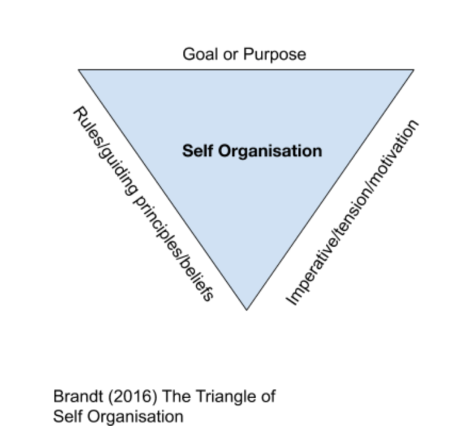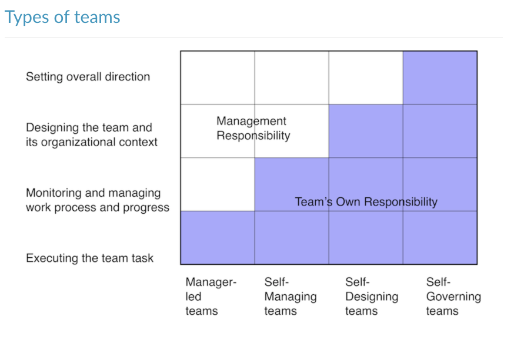.jpg)
Are we all agile now?
In this blog, Dr Karl Royle briefly explains the origins of agile work practices that have migrated from the software industry, discusses some of the basic assumptions and practices of agility, and explores how anyone can use them to develop an agile mindset for both life and work.
Are we all agile now?
Over the past 18 or so months of the pandemic we have heard the word agile a lot and agility has been evidenced in many of the successes of the response to Covid 19. Respirator production, vaccine development, trials and roll out, even down to ordering by app from outside tables in cafes have all been innovated through a speeding up and collaborative engagement as opposed to competition. Even at university we are embracing ‘agile working’ and, while we are yet to see its results, it does appear to adhere to many of the basic premises of being truly ‘Agile’ that have migrated from industry.
What is Agile?
Agile in a structured form originated in the world of software development with the publication of the Agile Manifesto (2001) which set out the basic concepts for agile working practice. Agile working focuses on
People over processes and tools
Doing things over the documenting of doing
Customer collaboration over contract negotiation
Responding to change over following a plan
And whilst Agility sees value in the items on the right it prefers to focus on the items on the left.
Agility is defined as ‘the ability to create and respond to change. It is a way of dealing with, and ultimately succeeding in, an uncertain and turbulent environment’ (Agile Alliance 2020).
Agile work practices (AWP) are derived in part from lean manufacturing - the Toyota Production System (TPS) documented in 1982 by Ohno (2013) and Takeuchi and Nonaka’s paper (1986), which led to the development of Scrum (the foremost agile framework) by Schwaber and Sutherland in 1995.
Stop starting – start finishing.
One of the main ideas in agility is minimising waste and maximising value which is sometimes expressed within Scrum as ‘maximising what you don’t do’. Part of developing an agile mindset is about stopping doing things as much as it is about doing things differently. Agility concentrates on the strategic power of saying no to things that are wasteful. Lean and agile practice is often confused with an ambition to reduce costs as an objective. This is not the case, it’s really about doing more with the resources you have. Our University’s agile working proposition can be seen to be minimising waste through giving people more choice about where they work most effectively and can be aligned with the 7 wastes of lean manufacturing (Fig 1.).
Figure 1. The 7 wastes

Where we focus attention is also important. Many businesses focus too much on the end product and often this is reflected in an obsession with targets as a metric of success. Lean and agile thinking reminds us to focus as much attention on the process in order to realise value and you can see this in some of our larger scale projects such as the inclusive curriculum which seeks to improve the quality of experience for all students.
Figure 2. Lean thinking. (Sofer 2019)

It's really all about the team.
Teams are the driving force of agility, especially within the scrum framework. A cornerstone of an agile approach is the concept of self-organisation (SO) which is not to be confused with self-management (SM) although there is a lot of debate around this within the agile community. According to Brandt (2016), SO (Fig.3) requires three elements: a purpose or goal, a set of rules or principles, and an element of tension or an imperative.
Figure 3. The triangle of self-organisation ( Brandt 2016)

Agile teams are also cross functional rather than specialists, that is they have all the skills needed within them to get the job done and they decide how to do it. This can be a little scary for traditional and overly bureaucratic organisations as it means giving up managerial control to an organisational framework and the team. Self-organisation is also a little anarchic having similarities with Anarchist theories of organisation. Ward proposes the theory of spontaneous order, where ‘given a common need, a collection of people will, by trial and error, by improvisation and experiment, evolve order out of chaos’ (Ward 1966, p.2). But let’s not worry too much about anarchy as SO is also derived from military experience, referring to World War Two, Ward also mentions ‘leaderless’ groups in the British and American armies who were free to react on the ground to ‘live’ situations and contexts. This has evolved into ‘Mission Command’ (Vandergriff 2017) in NATO, which cedes control in combat situations rather than preserve a chain of command that cannot directly control a situation. It requires SO towards a goal or mission orders within set rules or principles. This is similar to Agile organisation, where a team decide how to achieve a given goal, responding to changes and modifying plans as they develop products within the rules of the Scrum framework. In a large organisation like ours it is perhaps wise to move gradually towards self-organisation. Hackman’s conceptualisation (1995) (Fig 4.) shows approaches to team management and the distribution of control.
Figure 4. Types of team. Adapted from Hackman (1995). Diagram attributed to https://less.works/less/management/self-managing-teams.html

The three pillars of Scrum.
When moving towards a self-managing environment the three pillars of scrum are the basis and jumping off point for beginning to develop an agile mindset.
These are
- Look at what we do every day and see if it is effective and the best way of doing things
- Adaption, of our processes and methods to maximise value for ourselves and for the end user of our service or product – change what isn’t working
- Transparency – be radically transparent in all that we do, from understanding why we are doing it and what part we are playing in the larger scheme of things
This last point is usually attained by using visual boards which map out processes and work done and not done by a team. The good part about this is that everybody sees everything. The bad part (but ultimately good) is the way that is highlights issues and difficulties that require change, whether this is a system with too many steps that has become part of ‘the way we do things around here’ or whether it shows that there is a bottleneck caused by a hippo (highest paid person obstruction) needing sign off.
Developing agility is never easy.
No two implementations of agile are the same and more often than not, without concerted effort and support across an organisation, they fail. This doesn’t mean that as an individual you can’t develop an agile mindset both at work and in life – inspect and adapt – look under that stone. The pandemic has shown us how things might be done differently, and some have been good and some bad, one practice we could all adopt is to prioritise our actions by value – value to ourselves, our students and colleagues at work and value to our families, neighbours and communities at home and where we live (people over processes and tools).
Maximise what you don’t do to make sure that you have time for the things that matter. That’s the start of agility, that and responding to change over following a plan.
References
Agile Alliance (2020) Agile 101. Available at: https://www.agilealliance.org/agile-essentials/ (Accessed:17 August 2021)
Brandt, A. (2016) The triangle of self-organisation, Available at: https://www.infoq.com/articles/triangle-self-organization/ (Accessed:17 April 2021)
Ohno, T. (2013) Taiichi Ohno’s workplace management: with new commentary from global quality visionaries. New York: McGraw-Hill.
Schwaber, K. & Sutherland, J. (1995) SCRUM Development Process. Available at: https://www.thescrummaster.co.uk/wp-content/uploads/2016/09/SCRUM-Development-Process-K-Schwaber.pdf (Accessed: 17 August 2021)
Sofer, E. (2019) Large Scale Scrum [PowerPoint presentation] 8 December. Practical Agile/LeSS. Belgrade.
Takeuchi, H. & Nonaka, I. (1986) ‘The new new product development game.’ Harvard Business Review 64(1)
Vandergriff, D. E. and Webber, S. (2017) Mission command: the who, what, where, when and why: an anthology. Kabul, Afghanistan: Donald E. Vandergriff.
Ward, C. (1966) Anarchism as a Theory of Organization. Available at: https://theanarchistlibrary.org/library/colin-ward-anarchism-as-a-theory-of-organization. (Accessed:17 August 2021)
If you would like to know more about agile work practices and the Scrum framework, keep an eye out for CPD events in the next two semesters. Agile practice can help with processes, projects, wider strategic portfolio planning and even pedagogy. Do get in touch if you would like to find out more.
For more information please contact the Corporate Communications Team.


/prod01/wlvacuk/media/departments/digital-content-and-communications/images-2024/Diane-Spencer-(Teaser-image).jpg)
/prod01/wlvacuk/media/departments/digital-content-and-communications/images-18-19/220325-Engineers_teach_thumbail.jpg)
/prod01/wlvacuk/media/departments/digital-content-and-communications/images-2024/241024-Dr-Christopher-Stone-Resized.jpg)
/prod01/wlvacuk/media/departments/digital-content-and-communications/images/Maria-Serria-(teaser-image).jpg)
/prod01/wlvacuk/media/departments/digital-content-and-communications/images-2024/241014-Cyber4ME-Project-Resized.jpg)
/prod01/wlvacuk/media/departments/digital-content-and-communications/images-2024/240315-Research-Resized.jpg)
/prod01/wlvacuk/media/departments/digital-content-and-communications/images/Kabaddi-WC-(teaser-image).jpg)
.jpg)
-.jpg)